The One Punch Man manga began as a brilliant send-up of superhero clichés, mixing intense battles with dry humor in a way that felt fresh and bold. Yusuke Murata's stunning artwork brought ONE's webcomic to life in ways nobody expected. For years, every chapter drop felt like Christmas morning for readers worldwide.
Then something shifted. Redraws became frequent, altering beloved moments that fans had already fallen in love with. Character arcs took unexpected turns that seemed to contradict everything the series once stood for.
Here are the ten moments from the redrawn One Punch Man manga that disappointed fans.
1. The Phoenix Man vs Child Emperor Disaster in One Punch Man Manga
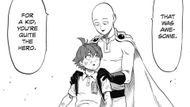
The extensive redraws of the Phoenix Man versus Child Emperor battle marked a turning point for many One Punch Man manga enthusiasts. The scrapped "Brilliant Eagle Mode" is undoubtedly missed by most readers who agree that the changes weren't for the better. Early chapters displayed stunning visuals and clever strategies that highlighted the Child Emperor’s sharp intellect in battle.
The redraw replaced these moments with Saitama's unnatural intervention. The revised version transformed Child Emperor from a confident top-tier S-Class hero into a more insecure character whose Brave Giant struggled against Tiger-level threats.
2. The God Mask Mystery That Makes No Sense
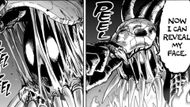
The heavy-handed inclusion of God's influence in the Monster Association arc introduced plot holes that disrupted the internal consistency of the One Punch Man manga. Orochi's sudden mask subplot exemplified this problem perfectly—he supposedly hid his identity after monsterization, but from whom exactly? Only Psykos had access to his underground domain, and she already knew his true appearance before the mask ever appeared. This retroactive lore addition felt desperate rather than organic.
3. Orochi's Identity Crisis and Lava Logic
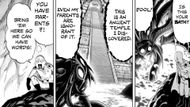
The Orochi redraw introduced plot elements that felt forced and poorly integrated into the One Punch Man manga storyline. Most anime are adapted from a single manga, but One-Punch Man has three different comic versions, which often confuse what’s canon. The addition of Orochi's mask subplot raised questions about his motivations, as he began wearing it after monsterization, when only Psykos could discover his cave anyway.
The elimination of the original "this is terror" scene robbed fans of a genuinely frightening moment. Additionally, the logic of a lava jet tanking continental-level energy attacks seemed inconsistent with the series' established power scaling.
4. Psykojet's Aerial Assault on Expectations
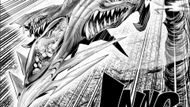
While many fans appreciated the incredible art and feats displayed during the Psykorochi battle, the transformation into "Psykojet" proved divisive within the One Punch Man manga community. The jet-like form represented a significant departure from the expected monster aesthetic, feeling more like a mecha anime element than something belonging in ONE's world.
The aerial combat sequences, while beautifully drawn, extended an already lengthy battle beyond what many felt was necessary.
5. Führer Ugly's Overwhelming Spotlight Monopoly
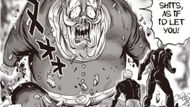
Führer Ugly's expanded role in the manga surface battle drew criticism for overshadowing other cadres and monopolizing destruction scenes. His rampage through multiple S-Class heroes—destroying Atomic Samurai, Zombieman, Tanktop Master, Gums, Drive Knight, and eliminating the Council of Swordsmen—felt disproportionate compared to other executives' contributions.
This concentration of impactful moments on a single antagonist unbalanced the ensemble cast approach. His dominance marginalized other cadres who barely achieved five percent of his destructive impact.
6. Blast's Interdimensional Friends Showing Up Too Early
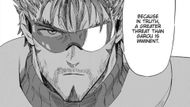
The premature introduction of Blast and his interdimensional companions felt inappropriate for the Monster Association arc's climactic moments within the One Punch Man manga. In the webcomic version, Blast is absent during the Monster Association arc, shifting the spotlight more directly onto Garou’s journey.
This addition shifted attention away from the central Garou narrative that fans had been following for years. The cosmic scope introduced by these characters seemed to dwarf the human-scale conflicts that made the series compelling.
7. Metal Bat and Garou's Forced Friendship Fantasy
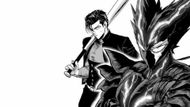
The unlikely alliance between Metal Bat and Garou during the Sage Centipede encounter represents one of the most criticized additions to the One Punch Man manga. This forced partnership, complete with their tag-team combat against the massive centipede, felt artificially cheerful and contradicted the established animosity between heroes and the self-proclaimed Hero Hunter.
Sage Centipede itself appeared as a random boss battle without sufficient setup or meaningful connection to the ongoing narrative. The creature's appearance seemed designed purely to facilitate the unlikely partnership between former enemies.
8. Garou's Neutered Character Development Journey
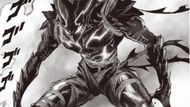
Perhaps the most significant disappointment for One Punch Man manga readers was the handling of Garou's character arc compared to the webcomic version. The webcomic focused on the fundamentals of character writing and featured a character progression that felt much more organic and mature. The manga's approach constantly reminded readers that "Garou isn't really bad," removing the moral complexity that made his character compelling.
9. Flashy Flash's Inconsistent Power Display Problems
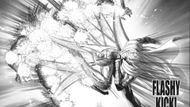
The manga's handling of power scaling became problematic when Flashy Flash demonstrated better resistance to Platinum Sperm's attacks than Drive Knight did against Golden Sperm. This inconsistency in character abilities confused readers about the established hierarchy of S-Class heroes and monster threats. Such scaling issues became increasingly common in later chapters, undermining the series' internal logic.
These inconsistencies extended to other characters like Metal Bat, keeping pace with Garou during their team-up sequence. The attention to detail in feat choreography that once defined the series' combat scenes seemed to diminish.
10. Fubuki's Deus Ex Machina Medical Miracles
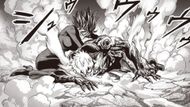
The introduction of Fubuki's convenient healing abilities served as an obvious plot device that many One Punch Man manga fans found unsatisfying. Her sudden appearance with life-saving powers felt like an artificial solution to consequences that should have carried more weight in the story. This type of convenient rescue mechanism undermined the stakes that had been carefully built throughout the Monster Association arc.
The One Punch Man manga is still a visual powerhouse, especially in action scenes, but certain creative choices have sparked division among longtime fans. Yet, the series still holds immense potential for redemption.
